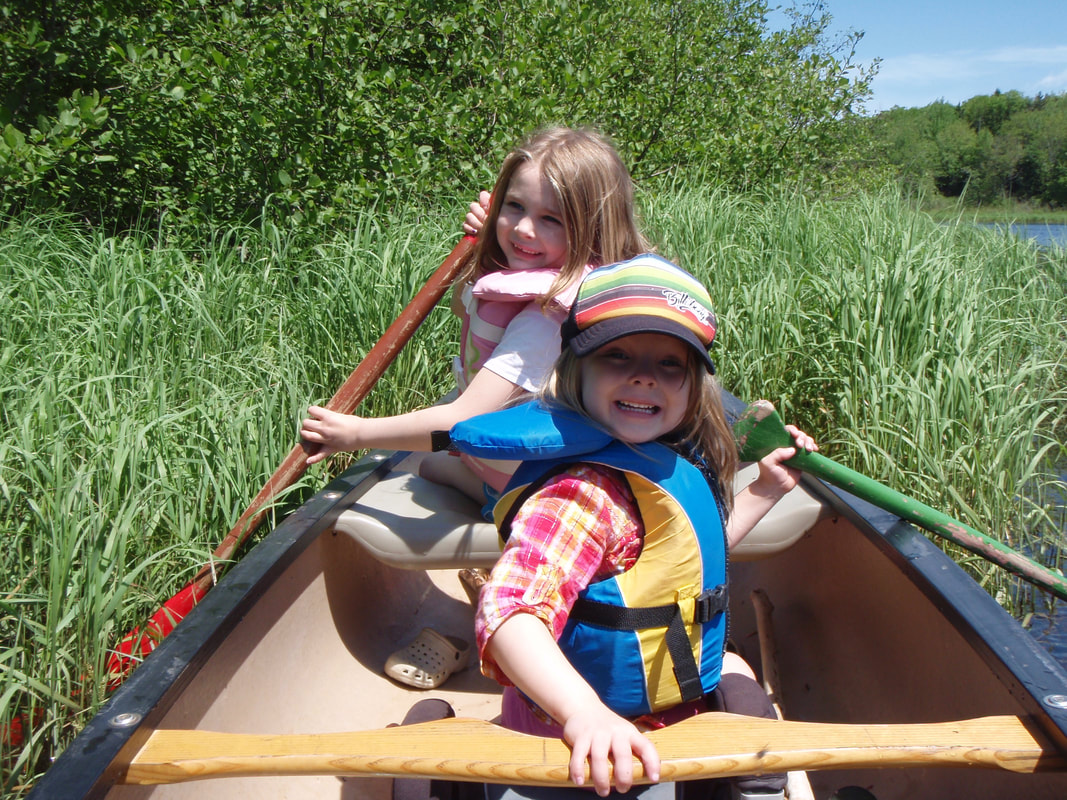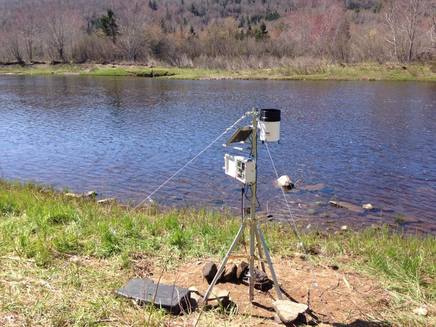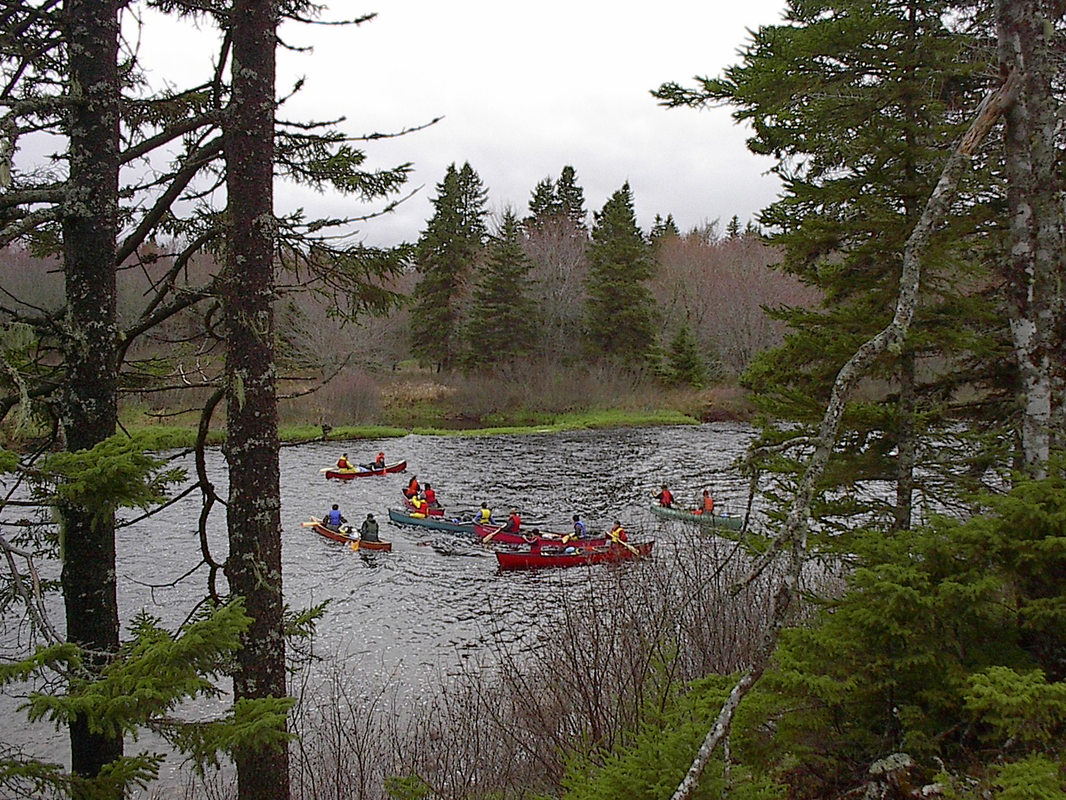|
It is with great pleasure we bring you a paddling experience on Nova Scotia's St. Mary’s River!
We are very excited to offer a live water level reading from SMRA's data loggers for anyone paddling our river system. See SMRA Data Loggers. We have two loggers and one is now online for our West branch. Our East branch logger will be coming soon. Here you can watch the river level, pH and rainfall. This information is valuable as you plan to insure you are heading out in sufficient water for your excursion. Our logger reads in feet and we recommend 2 and 1/2 feet of water for your West branch paddling adventure. You will find that the St. Mary’s River is a 24 hour river. That is it will rise for approximately 24 hours and then start to fall again. If you are planning a paddling trip and decide to paddle the West branch of the St. Mary’s with less than our recommended two foot level you may end up dragging your boat for much of the trip. For an example, see: Cumminger Pool 4 Seasons. If the water level is lower you may want to consider paddling the St. Mary’s River East branch. This branch does hold sufficient water for most of the summer. Starting at the Aspen bridge paddling through the Glenelg lakes on through the forks of the West and East branch known as Silver’s pool. Then continue on past the old gold mines at the Bells of St. Mary’s past Mitchel’s pool, the old Waternish Graveyard pool, and on to the Stillwater. You can paddle through the Stillwater or plan to get off the river here. If you paddle on through the Stillwater you can plan to get out of the river just below the Ford pool at the mouth of Archibald’s brook. From here on you will need substantially high water for a rock free paddle. One thing to note about this East branch/Main branch paddle is a possible head wind in the lake and Stillwater. These head winds can be quite difficult to paddle against and you should have a backup plan for such an encounter. If you want to get out of the river at the beginning of the Stillwater you can contact us and we will give you information on where would be a good location. In the Spring of 2017 we are adding 16 river signs to this East branch/Main branch paddling excursion with four of them as access points. These signs will have: A you are here map, a QR code for scanning on your phone and the location name. The QR code will link you to a location on our web page with angling information for the area, history, stories and pictures. This paddling trail is roughly 20 km of river, and you can check it out on our Paddler's Trail Virtual Tour! |
Above: West Branch Data Logger. Photograph by Scott Beaver.
Below: Spring Canoe Trip on West Branch St Mary's River. Photographs by Brenda Carpan. Left - Paddling on the Sherbrooke Lake system, a tributary of the St. Mary's River.
|

THE MISSING PADDLE
If you like water, one of the most relaxing, or sometimes exhilarating things you can do, is canoe the beautiful St. Mary’s River. For a number of years Rene and Carol Beaver, Wayne and Joyce Beaton, other couples and Lillian and I would start, usually at Sutherland’s Bridge or my camp in Smithfiield. Spring or surrounded by Fall colours, it is always fun to hit the water with friends and to paddle, watch, listen, laugh and enjoy.
In May, 1996 we dressed warmly and had a relaxing trip down the river, together with about ten couples from the Dartmouth Canoe Club. It was pouring rain when we started but good to get out in the fresh air. Lillian was in the bow and our springer spaniel Ruffles in the middle. We were approaching a small island in the river opposite the head of the cornfield above Rene’s place on the Hattie Road in Glenelg. It had been a peaceful trip, we were almost finished and the water was very quiet to the right.
At the last minute I said to Lillian “let’s go through that little stretch of white water ot the left of the island” and so we did. Suddenly we caught a large rock, the canoe swung sideways and Lillian let a shriek out of her as the canoe began to turn over. The next thing I knew I was on the bank and my pants and clothes seemed dry. I don’t know how I managed that. Although some almost accused me of it, I certainly don’t remember stepping on Lillian’s head on the way to shore.
I looked in the river. The canoe was overturned, Lillian was trying to stand in the current and fell in again. I waded into the river, rescued her from the cold water and then brought in the canoe. We were both okay. It was the first time in over twenty some years of canoeing that we had ever tipped.
Then I noticed there was only one paddle on the shore. At this point I sternly lectured Lillian that “Your never, never, no matter what, let go of your paddle. It could be the difference between life and death!” She looked up at me and knew I was real serious. Fortunately I had a spare paddle tied inside the canoe and minutes later we were paddling on our way to Rene’s.
Before very long I spied a floating paddle and picked it out of the water. To my horror, I realized it was my paddle. I didn’t say a word.
Before long we took a warm shower and changed our clothes. We went to Rene and Carol’s motel for dinner and the boys and I had a few laughs about the trip and paddle. I’m not sure how Lillian found out, but she did and I had to eat crow for several days after.
- George Sutherland
If you like water, one of the most relaxing, or sometimes exhilarating things you can do, is canoe the beautiful St. Mary’s River. For a number of years Rene and Carol Beaver, Wayne and Joyce Beaton, other couples and Lillian and I would start, usually at Sutherland’s Bridge or my camp in Smithfiield. Spring or surrounded by Fall colours, it is always fun to hit the water with friends and to paddle, watch, listen, laugh and enjoy.
In May, 1996 we dressed warmly and had a relaxing trip down the river, together with about ten couples from the Dartmouth Canoe Club. It was pouring rain when we started but good to get out in the fresh air. Lillian was in the bow and our springer spaniel Ruffles in the middle. We were approaching a small island in the river opposite the head of the cornfield above Rene’s place on the Hattie Road in Glenelg. It had been a peaceful trip, we were almost finished and the water was very quiet to the right.
At the last minute I said to Lillian “let’s go through that little stretch of white water ot the left of the island” and so we did. Suddenly we caught a large rock, the canoe swung sideways and Lillian let a shriek out of her as the canoe began to turn over. The next thing I knew I was on the bank and my pants and clothes seemed dry. I don’t know how I managed that. Although some almost accused me of it, I certainly don’t remember stepping on Lillian’s head on the way to shore.
I looked in the river. The canoe was overturned, Lillian was trying to stand in the current and fell in again. I waded into the river, rescued her from the cold water and then brought in the canoe. We were both okay. It was the first time in over twenty some years of canoeing that we had ever tipped.
Then I noticed there was only one paddle on the shore. At this point I sternly lectured Lillian that “Your never, never, no matter what, let go of your paddle. It could be the difference between life and death!” She looked up at me and knew I was real serious. Fortunately I had a spare paddle tied inside the canoe and minutes later we were paddling on our way to Rene’s.
Before very long I spied a floating paddle and picked it out of the water. To my horror, I realized it was my paddle. I didn’t say a word.
Before long we took a warm shower and changed our clothes. We went to Rene and Carol’s motel for dinner and the boys and I had a few laughs about the trip and paddle. I’m not sure how Lillian found out, but she did and I had to eat crow for several days after.
- George Sutherland






